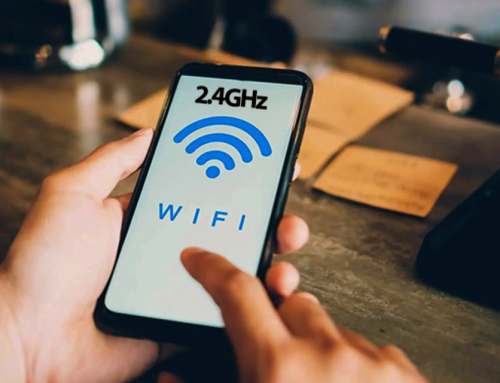Whether you are a broadband provider or a broadband user, we know that many people still face some difficulties with wireless internet, which end up interfering with the quality of the connection. In general, not always the quality of the internet is to blame. Fortunately, there are some means that can help resolve this, such as positioning the router correctly, among others.
So, check the post until the end and stay on top of the tips we've prepared to help you avoid this very common router dilemma – whether you're a broadband end user or a provider who wants to install your client's router in the best point of residence.
By the way, if you fall into this second option, it is worth knowing that the Técnico da Anlix's Flashbox Solution, has as one of its main functionalities to indicate to the technician during installation the best location of the router inside the customer's home. It is worth it to experiment!
So how to position the router?
Now, let's go over some tips:
1. Establish the center point of the house
First of all, one of the best ways to position the router and get the best result is to establish the center point of the house. In this way, the signal is allowed to spread throughout the residence.
Furthermore, when it comes to houses with two floors or more, it is advisable to opt for the central point of the first floor, preferably at a high point. Thus, the signal from the router will be distributed evenly in all areas.
Another tip is to place it in the most used spot in the house, which will make the Wi-Fi signal always strong there.
2. Installation in a high location

Another factor that can influence operation is the location where it was installed, as radio waves radiate forward and downward. So, as most furniture tends to be in the foreground, there is a higher level of obstacles.
That is, the best option is to position the router in higher places, such as on top of bookshelves or similar furniture. In addition, it is possible to stick this device to a wall, which allows you to make it even higher and ensure good network range.
3. Position the antennas correctly
Generally, the best position to place the antennas is upwards. This causes the signal to spread horizontally. However, when dealing with different floors, the ideal is to position them lying down, as this way the waves will be spread vertically.
4. Avoid placing the router near obstacles
Some objects such as mirrors, aquariums, very thick walls or beams, as well as equipment that causes noise on the network, are like obstacles that can disrupt signal transmission.
Therefore, it is extremely important for the correct operation of the router to check a location far from these objects, especially aquariums, as water is also one of the obstacles that most prevents the signal from passing, even absorbing it.
Thus, establish a location as free as possible, such as places close to corridors, which offer fewer walls to overcome. Avoid placing it near mirrors or reflective surfaces as they will make the signal go back and forth quickly.
5. Avoid placing the router next to other electronics
Some electronics work at the 2.4 GHz frequency, in this case, the same used by the most common Wi-Fi signal in technologies prior to Wi-Fi 6 and Wi-Fi 5 (AC). The consequence of using this same frequency band is interference in the emission and quality of networks and potentially slow use.
Therefore, choose not to leave the router close to other electronic devices, especially microwaves, cordless phones or baby monitors. Currently, it is possible to switch to the 5 GHz band, in the case of routers dual band.
6. Avoid leaving the router near windows
Often, the sun and humidity become major enemies of the proper functioning of a router, as these two factors can overheat the equipment and reduce the useful life of the device, respectively. In this way, avoid placing your router near windows and on balconies, in addition to places subject to heat and humidity.
It is worth remembering that in some cases the product may already be corrupted due to these exposures. So, get a new router and avoid the practice of these situations.
7. Use an aluminum can
Heads up! It is worth noting that this option is, in fact, a big “gambiarra”. Metals can be great enemies of routers, as they end up reflecting the radio waves emitted by the device, which often brings great damage to operation. However, using an aluminum can can be beneficial in some cases, especially when you intend to route the signal.
When it is not possible to position the router in a central point of the residence, this technique can help, as it is possible to leave the router emitting only in a desired direction. To do this, remove the bottom of the can and cut it in half.
Then you need to open it up so that it looks like a radar and then insert it into the router. The antenna must be in the opening hole of the aluminum can, behind the antenna, projecting the waves in a single direction. Again, it is important to repeat that this option is not the best solution.
8. Use an additional point with a mesh network
Finally, a last option to improve the Wi-Fi signal at the customer's home is to use an additional point of mesh network🇧🇷 Even better if the provider has the opportunity to use the Anlix Mesh 2.0 network, whose great differential is its multi-brand support.
That is, the provider can reduce costs by using routers and ONTs of lesser value, which do not come with Mesh support from the factory, and of different models and different brands, in a single network to improve the signal at the customer's home.
If you want to go a little deeper into the subject, watch this video from our series Conecta Anlix on YouTube and learn much more with the class of our CTO, Gaspare Bruno:
Conclusion
In summary, the desire of every consumer is for the router to work properly at all times, but we know that some factors, which may even go unnoticed, affect its quality.
So, always be aware of these issues and how they can affect the Wi-Fi signal. Some actions such as restarting the router, avoiding obstacles, changing the channel used on the device, among others, can help improve the signal in your home, but they are not always effective.




Leave A Comment